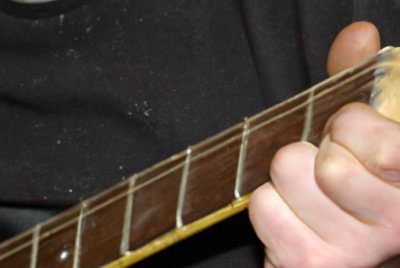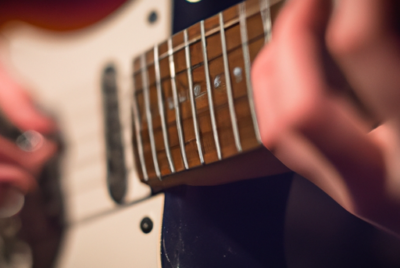What Role Does The Guitar Play In Different World Music Genres?
The guitar, an iconic instrument renowned for its versatility and allure, plays a significant role in enriching various world music genres. With its six strings and diverse range of tones, the guitar bolsters the melodic foundations of countless cultural musical traditions across the globe. From the rhythmic flamenco strums of Spain to the intricate fingerpicking of Indian classical music, the guitar has seamlessly integrated itself into the fabric of these diverse genres, elevating their sounds and captivating listeners with its compelling melodies. Whether it’s the driving force of a Brazilian samba or the soulful accompaniment in American blues, the guitar’s presence in world music constantly evolves, continuing to shape the sonic landscape of our global cultural tapestry.
Guitar in Western Classical Music
Origin and Evolution
The guitar has a rich history in Western classical music. It originated in Spain in the 15th century and quickly gained popularity throughout Europe. Initially, the guitar had four courses of strings, which were gradually increased to six courses by the 16th century. With the advent of the modern six-string guitar in the 19th century, it became a staple instrument in classical compositions.
Key Features and Techniques
The guitar in Western classical music is known for its timbre and versatility. It offers a wide range of techniques, such as fingerpicking, strumming, and complex arpeggios. Notable features include the use of nylon or gut strings, which produce a warm and mellow tone, as well as the incorporation of dynamics and expressive techniques to convey emotions through the instrument.
Notable Composers and Performers
In classical music, several notable composers have written pieces for the guitar. Some well-known composers include Mauro Giuliani, Fernando Sor, and Francisco Tárrega. Additionally, renowned guitarists such as Andrés Segovia and Julian Bream have contributed significantly to elevating the guitar’s status as a solo instrument in classical music.
Guitar in Flamenco
Traditional Flamenco Guitar
The flamenco guitar holds a significant role in the passionate and expressive genre of Flamenco music. With its origins in Andalusia, southern Spain, the flamenco guitar is traditionally made of cypress wood and features a tap plate to accommodate the intricate percussive techniques used in Flamenco.
Flamenco Techniques and Styles
Flamenco guitar techniques are characterized by fast fingerpicking, rhythmic strumming, and percussive effects achieved by tapping the body of the guitar. Styles within Flamenco, such as Soleá, Bulería, and Alegria, each have their distinct techniques and rhythms, which are mastered by flamenco guitarists to convey the intense emotions of the music.
Renowned Flamenco Guitarists
Flamenco has seen the emergence of several legendary guitarists who have shaped and defined the genre. Paco de Lucía, Tomatito, and Vicente Amigo are widely recognized for their virtuosity and ability to convey the depth of feeling in Flamenco music through their skillful playing and innovative approaches to the instrument.
Guitar in Jazz
History and Development
The guitar has played a crucial role in the development of jazz music since its early beginnings in the late 19th and early 20th centuries. Initially used as a rhythm instrument, the guitar evolved into a major component of jazz ensembles, contributing to both harmony and melody.
Guitarists and Their Contributions
Numerous guitarists have left a lasting impact on jazz music. Charlie Christian’s electric guitar playing in the 1930s and 1940s revolutionized the instrument’s role in jazz, influencing generations of guitarists to come. Additionally, legends like Django Reinhardt, Wes Montgomery, and Pat Metheny have expanded the possibilities of the guitar in jazz through their innovative techniques and unique improvisational styles.
Different Guitar Styles in Jazz
Jazz guitar encompasses a variety of styles, such as swing, bebop, fusion, and modern jazz. Each style has its distinctive characteristics, phrasing, and melodic concepts, allowing guitarists to explore different tonalities and improvisational approaches. From the rhythmic comping of Freddie Green to the intricate bebop lines of Joe Pass, the guitar remains a versatile and vital instrument in the world of jazz.
Guitar in Blues
Origins and Influences
The guitar has been intrinsic to the roots and expression of blues music. Originating in the African-American communities of the southern United States, blues music arose from the combination of African musical traditions, work songs, and spirituals. The guitar’s portability made it a perfect instrument for traveling musicians to tell stories about the hardships of life.
Notable Blues Guitarists
Throughout the history of blues, numerous guitarists have left an indelible mark on the genre. Legends like Robert Johnson, B.B. King, and Muddy Waters have influenced generations of musicians with their distinct styles and emotive playing. Their use of expressive techniques such as bending, sliding, and vibrato has become synonymous with the blues guitar sound.
Distinctive Techniques and Playing Styles
Blues guitarists employ techniques such as fingerpicking, slide guitar, and intricate bending to convey the emotion and rawness of the blues. Whether it’s the Delta blues style with its percussive fingerpicking or the electrified Chicago blues sound, the guitar has a powerful role in capturing the essence of the blues genre.
Guitar in Country Music
Country Guitar’s Roots
The guitar has always been deeply rooted in the fabric of country music. Country music’s origins can be traced back to folk traditions brought by European settlers to the United States. From traditional bluegrass to modern country pop, the guitar plays a fundamental role in the genre’s sound and storytelling.
Country Guitar Techniques and Styles
Country guitar emphasizes techniques such as flatpicking and hybrid picking. Flatpicking involves using a plectrum (pick) to play fast and precise single-note lines, while hybrid picking combines the use of the pick and fingers for added flexibility and dynamics. The various sub-genres of country music, including honky-tonk, Western swing, and outlaw country, each have their unique guitar styles and characteristic techniques.
Famous Country Guitarists
Country music boasts a wealth of iconic guitarists who have shaped the genre. From the influential picking of Chet Atkins to the twangy Telecaster sounds of James Burton, country guitarists have defined the genre’s characteristic sounds. Other notable country guitarists include Brad Paisley, Johnny Cash, and Albert Lee, who have all left an indelible mark on the history and evolution of country guitar playing.
Guitar in Reggae
Guitar’s Role in Reggae Rhythm
In reggae music, the guitar plays a crucial role in establishing the rhythmic foundation. Known as the “skank,” reggae guitarists use a steady rhythmic pattern characterized by staccato chords played on the offbeat. This rhythmic pattern, often referred to as the “one-drop” rhythm, creates the distinctive syncopated groove that is synonymous with reggae music.
Notable Reggae Guitarists
Reggae has seen the emergence of talented guitarists who have contributed to the genre’s distinct sound. Artists such as Ernest Ranglin, Earl “Chinna” Smith, and Junior Marvin have played an integral role in shaping reggae’s guitar-driven soundscapes. Their rhythmic precision and melodic accents add depth and complexity to reggae compositions.
Reggae Guitar Techniques
Reggae guitar techniques focus on emphasizing the offbeat and creating a steady rhythm. Guitarists often employ muting techniques, such as the “palm mute,” to achieve the percussive and choppy sound characteristic of reggae. Additionally, the use of melodic fills and solos within reggae songs adds a dynamic and expressive dimension to the guitar playing in the genre.
Guitar in Bossa Nova
Incorporating Guitar in Bossa Nova
The guitar is an integral element of the Bossa Nova genre, which originated in Brazil in the late 1950s and early 1960s. Bossa Nova guitar playing typically involves a fingerstyle technique that combines melodic lines with percussive rhythms. The guitar’s ability to provide harmonic and rhythmic support makes it an essential component of the genre.
Prominent Bossa Nova Guitarists
Bossa Nova has been championed by talented guitarists who have become synonymous with the genre. João Gilberto, often referred to as the father of Bossa Nova, developed the iconic “bossa rhythm” on the guitar, with his delicate fingerpicking and syncopated strumming. Other notable Bossa Nova guitarists include Luiz Bonfá and Baden Powell, who have contributed to the genre’s unique sound and style.
Guitar Techniques in Bossa Nova
Bossa Nova guitarists employ techniques such as thumb independence, chord melody playing, and syncopated rhythms to create the genre’s signature sound. The use of extended chords, embellishments, and subtle harmonics adds depth and richness to the guitar playing, allowing Bossa Nova guitarists to convey the genre’s laid-back and melodic nature.
Guitar in Celtic Music
Traditional Use of Guitar in Celtic Music
Celtic music has a long-standing tradition of incorporating the guitar into its ensembles. While traditionally associated with instruments like the fiddle and bagpipes, the guitar’s versatility and harmony-enhancing capabilities have made it a staple in contemporary Celtic music. It provides rhythmic and harmonic support while complementing melodies played by other instruments.
Major Celtic Guitarists
Celtic music has seen the rise of highly skilled guitarists who have become influential figures in the genre. Artists like Tony McManus, Pierre Bensusan, and John Doyle have seamlessly blended traditional Celtic tunes with intricate guitar arrangements. Their use of alternate tunings, fingerstyle techniques, and percussive rhythms showcases the guitar’s adaptability in Celtic music.
Distinctive Guitar Techniques
Celtic guitar playing encompasses techniques such as DADGAD tuning, which enhances the resonance and allows for unique chord voicings. Guitarists in Celtic music often use ornaments, such as hammer-ons, pull-offs, and slides, to add embellishments and ornamentation to the melodies. The guitar’s rhythmic strumming and chord progressions contribute to the lively and infectious nature of Celtic music.
Guitar in Indian Classical Music
Integrating Guitar in Indian Classical Music
The guitar has found its place within the tapestry of Indian classical music, a genre with deep historical roots and complex melodic and rhythmic structures. While traditionally associated with instruments like the sitar and sarod, the guitar has gained recognition as a viable instrument for playing ragas and accompanying vocalists in Indian classical music.
Renowned Indian Classical Guitarists
Indian classical music has seen the emergence of remarkable guitarists who have adapted the instrument to the genre’s unique improvisational nature. Pioneers like Brij Bhushan Kabra, Debashish Bhattacharya, and Vishwa Mohan Bhatt have developed novel techniques, including the use of slide guitar and sympathetic resonators, to capture the essence of Indian classical music on the guitar.
Guitar Techniques in Indian Classical Music
Indian classical guitarists employ techniques such as intricate melodic ornamentation, sliding between notes, and exploration of microtonal nuances to replicate the expressive nature of Indian classical music on the guitar. The guitar’s fretboard is adapted to accommodate the intricate nature of Indian ragas, allowing guitarists to fully explore the melodic and rhythmic intricacies of the genre.
Guitar in African Music
Guitar’s Role Across Different African Genres
The guitar has made its mark across various African music genres, adding melodic richness and rhythmic complexity to the musical landscape. From highlife in Ghana to soukous in Congo, African guitarists have created distinct sounds and styles that reflect the cultural diversity and vibrancy of the continent.
Notable African Guitarists
Africa has produced exceptional guitarists who have influenced not only the local music scenes but also international audiences. Artists like Ali Farka Touré, Oliver Mtukudzi, and Habib Koité have showcased the guitar’s ability to blend traditional African rhythms with contemporary styles. Their virtuosity and innovative playing have been instrumental in expanding the guitar’s role in African music.
Styles and Techniques in African Guitar Music
African guitar playing encompasses a wide range of styles and techniques. Guitarists often use complex polyrhythms, intricate fingerpicking patterns, and melodic phrasings influenced by traditional African musical traditions. The guitar’s percussive elements, achieved through techniques such as thumb picking and muting, create a lively and infectious rhythm that underpins the vibrant music of Africa.




